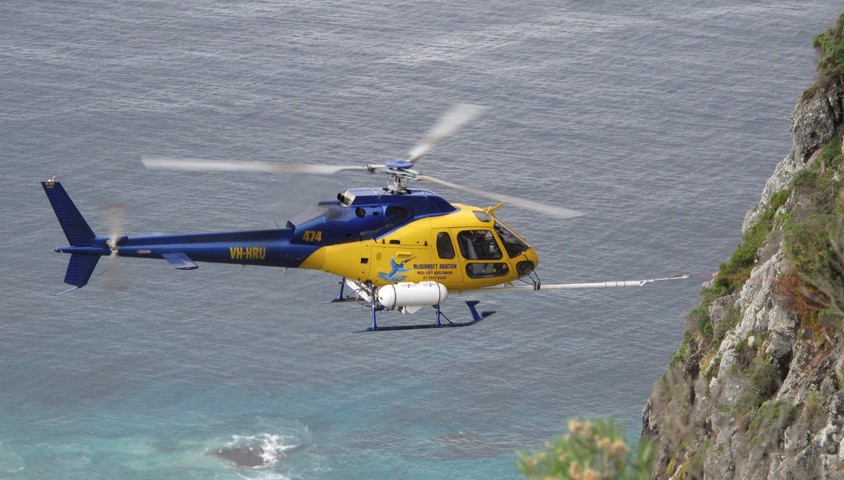Lord Howe Island has recently completed a world first in weed control by using a helicopter to undertake targeted spraying on the inaccessible slopes and cliffs on the island.
In June 2015 a helicopter with a specially fitted ‘lance’ was used over two days to spray at least 1,500 weeds over 10 kilometres. This method enabled weeds to be accurately spot sprayed. The success of this innovative technique was a testament to the skill and accuracy of the pilot.
Since 2004 the Lord Howe Island Board has been embarking on an ambitious strategy to eradicate key noxious and environmental weeds across the entire island. To date, infestations of mature weeds have been controlled from at least 80 per cent of the island. Other major achievements include the mapping of major weeds, the development of an island-wide Weed Management Strategy and ongoing community education.
The Weeds of Lord Howe Island
Weeds threaten native communities because they alter them, outcompete native species (for nutrients, light, water), and alter the resources available for fauna. They usually have no pests or diseases to limit growth or reproduction and may form vast, dense colonies. Several weeds species on Lord How Island have a wide environmental tolerance, meaning they can grow well in a wide range of habitats. Weed invasions threaten all vegetation communities across Lord Howe Island.
All weeds on the island are garden escapes. There are around 670 non-native plants on Lord Howe Island (including non-invasive edibles) and introduced plants outnumber native plants. Of the weeds, 271 species have invasive characteristics, 22 species are listed as noxious and 50 are targeted for eradication with continued monitoring for garden escapes. The major weed species Lord Howe Island produce seeds which are dispersed either by wind or birds. Cherry guava, ground asaparagus, lantana and sweet pittosporum are some of the worst weeds.
The worst weed infestations on the island are on Transit Hill, Intermediate Hill near the settlement and Grey Face, which is a steep slope of Mount Lidgbird.

Helicopters are able to spray in areas that would be much more difficult for people to access by any other means.
Roads to Removal
Terrain and access are the biggest issues that have hampered weed control on the island. The large scale of weed infestation on the island meant that the threat had to be initially assessed. This was done by dividing the island into weed management areas or blocks, delineated using natural features, which provided boundaries for on-ground works. On-ground weed control includes manual removal, cut and paint and spraying techniques. Weed control teams on the island carry GPS units to track log all search effort, this allows the mapping of what areas have already been covered. Weed control teams are sometimes winched in and out of remote locations by helicopter.
Quarantine is the key tool for the prevention of new weed species being introduced to the island, and visitors to the island should be careful not to unintentionally bring weed seeds with them. Education and training is essential for both Lord Howe Island board staff and the community. The Friends of Lord Howe Island play an important role in weed control on the Island, by undertaking minimal disturbance bush regeneration focusing primarily on the Transit Hill area.
Visitors to the island can join the Friends of Lord Howe Island for weeding at certain times of the year, stick to pre-formed tracks, clean all equipment, clothing and gear before arriving on the island and between walks on the island. Bushwalkers can also help by avoiding eating cherry guava (or the fruit of other edible weedy plants) and then going to the toilet in the bush.




